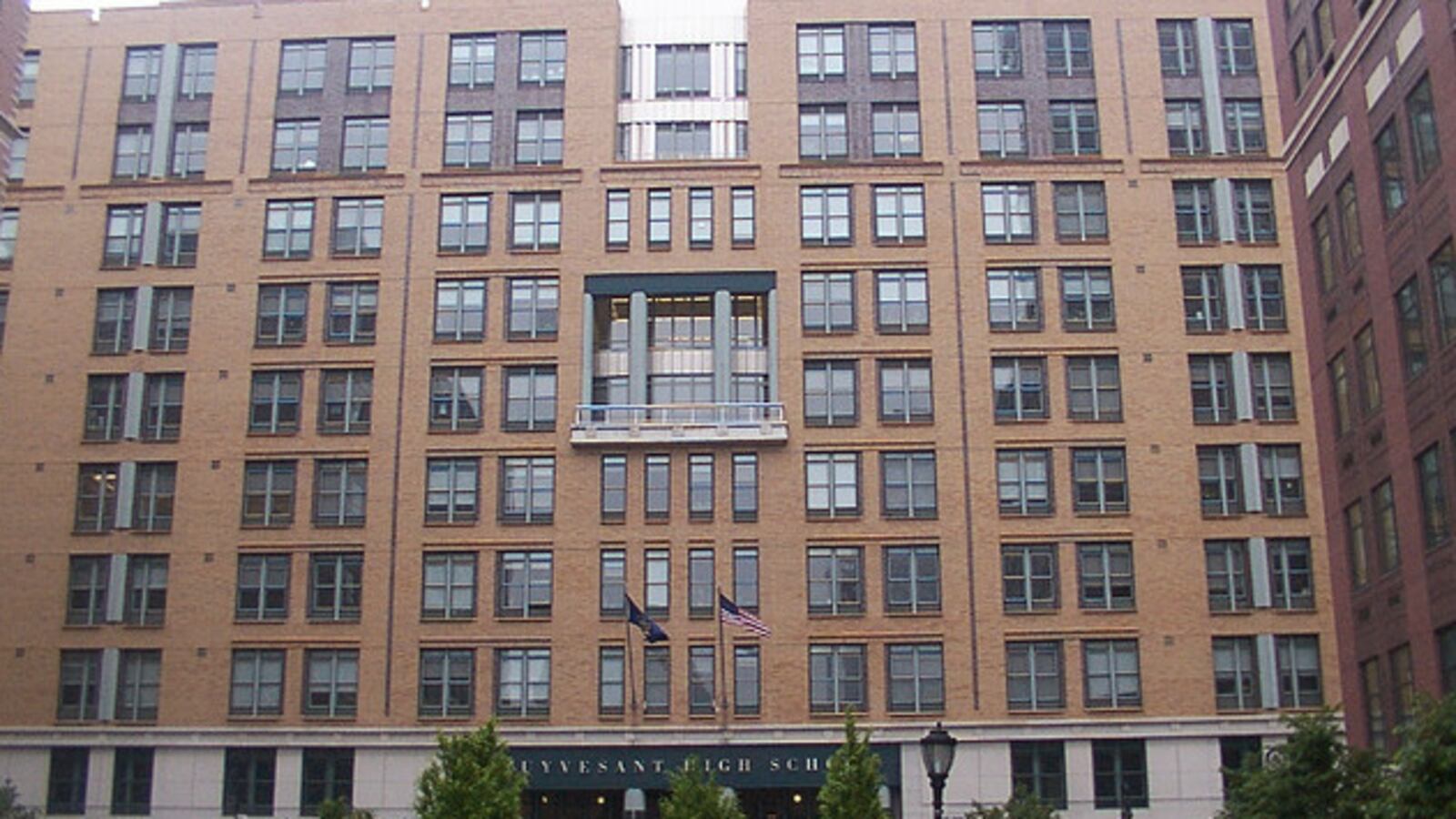On Monday, the Department of Education announced that Eric Contreras, a former teacher and the city’s executive director of social studies, will become the new principal of Stuyvesant High School. Contreras, 43, has two sons in Queens public schools and a daughter who graduated from Stuyvesant in June.
Born in Guatemala and raised by a single mother in New York, Contreras will be the school’s first Hispanic principal at a time when the school is under pressure to increase its black and Hispanic enrollment. In the 2015-2016 school year, black and Hispanic students made up just 3.2 percent of Stuyvesant’s enrollment.
“Throughout my career, diversity has been an area I’ve been deeply invested in and I look forward to engaging in ongoing conversations with my school community around these important issues,” Contreras said in a statement.
Stuyvesant’s black and Hispanic enrollment is lower than at other specialized schools, all of which use the same entrance exam for admission. But the other schools are struggling to diversify, too. Citywide, black and Hispanic students make up approximately 70 percent of the student body, but only 11.8 percent of students at specialized schools, according to an October study by the Community Service Society.
Even the city’s top-performing black and Hispanic middle-schoolers often do not enroll in the city’s specialized schools, the Center for New York City Affairs reported in June.
In an interview with the Wall Street Journal, Contreras said he would consider several ways to increase diversity at the school, such as expanding outreach to middle schools that don’t normally send many students to Stuyvesant, using alumni as mentors, and starting an intensive summer prep program for prospective applicants.
In 2013, Brooklyn Technical High School (one of the city’s three original specialized high schools, along with Stuyvesant and the Bronx High School of Science) started its own summer program that provides rising seventh graders from underrepresented middle schools five weeks of summer enrichment courses and extensive test prep. In its first year, 30 students completed the full year of programming. Of those, 16 were admitted to Brooklyn Tech and 10 to Stuyvesant.
Brooklyn Tech also participates in the Discovery program, which gives roughly 220 students who just missed the cutoff on the Specialized High School Admissions Test a seat at a participating school if they complete a summer curriculum. Though the program added an additional 100 spots last year, the share of black and Hispanic students enrolled dropped from 32 percent in 2015 to 26 percent this year.
Stuyvesant stopped participating in the Discovery program more than a decade ago when the city added five more specialized schools and lowered the cutoff score needed to qualify for the program. Stuyvesant’s then-principal Stanley Teitel felt the change would leave Discovery students too far behind their classmates. Of the original three specialized high schools, only Brooklyn Tech still participates in Discovery.
Despite Contreras’ best intentions, advocates say he will likely have a hard time changing the demographics at his school. Unlike the other five specialized high schools, Stuyvesant, Bronx Science and Brooklyn Tech are bound by state law to use only the Specialized High School Admissions Test for deciding who gets in.
Diversity advocates have long pushed for expanding admissions beyond a single test, but legislation to change that requirement has repeatedly failed. One recent bill, introduced in the State Assembly in 2014 and backed by the New York City Council and Schools Chancellor Carmen Fariña, never made it to a vote.
In October, advocates sent Fariña a letter asking for changes to the admissions process. One proposal would guarantee the highest-achieving students at each middle school a seat at one of the specialized high schools; another would allow the specialized schools to consider additional criteria like applicants’ state test scores in admissions.
According to the Community Service Society, changes like these would nearly double the number of black and Hispanic students in specialized schools. But Lazar Treschan, the organization’s director of youth policy, doesn’t discount the ideas Contreras is contemplating for Stuyvesant.
“As long as there’s a single test, there will be a lot of efforts with few results,” Treschan said. “But it’s great to see the school’s leadership recognize that it’s time for change.”

